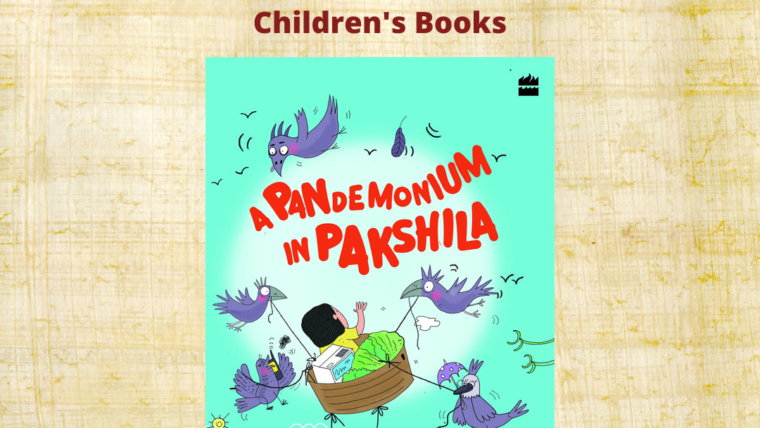Trees do not mean timber alone. Trees also mean oxygen, soil and water. Those who believe that economy and ecology are at two different ends of the spectrum are mistaken. Ecology, in fact, is a permanent economy. For a world madly consumed by ‘development’, this quote by the famous environmental activist Sunderlal Bahuguna, the man behind Chipko Aandolan, mentioned in the book, is both very urgent and relevant. For a country that takes pride in its diversity in food, festivals and traditions, it is unfortunate that trees, an inseparable entity of our cultural heritage, have slipped into a state of neglect.
Even as stories of different dynasties, styles of art, architecture and weaves are celebrated in books, the tales of trees whose lives are interwoven with those of several rulers, freedom fighters, poets, scientists, Gods, holy men and the commoner have garnered minimal attention. Iconic Trees of India – 75 Natural Wonders by S Natesh, with illustrations by Sagar Bhowmick, strives to fill the above gaps and succeeds by letting us dwell in nature’s lap.
An introduction penned by the author, which doubles up as a summary one can reserve for reading at the end, offers a good jumpstart to the book where a chapter, one to two pages long, is dedicated to each of the 75 iconic trees. For convenient geographical reference, the trees are organised under four regions – north, south, east, and west of India. Let not the tabular data in the introduction mislead you into thinking that this is a fact-addled, cumbersome non-fiction work. Not just botany but delving into history and local folklore, with a sprinkle of mythology, each chapter reveals how trees are a vital link to every facet of what makes up our heritage. A small header consisting of details like the common name, scientific name, family to which the tree belongs, and its location marks the start of each chapter and a beautiful watercolour illustration of the tree enhances the visual appeal.
It is of note that the author, who taught botany for nearly a decade at the University of Delhi before moving to the Department of Biotechnology, has written about each one of these 75 trees (barring only 3) after visiting them in their natural habitat, travelling across the length and breadth of the country and braving many challenges at his age, a gargantuan effort over seven years. Such is his love for his green friends that a new plant species has been named in his honour (Aponogeton nateshii).
From the blue gums in the south of India to chinar trees in Kashmir introduced by erstwhile kings, from the lone Giant Sequoia in Tangmarg, Jammu and Kashmir to one of its kind double coconut palm of Kolkata which yields a fruit weighing 45kg, from the still growing Great Banyan in Howrah that stands on its 3772 prop roots even after its main trunk was destroyed by lightning to Chalta Ambo, the walking mango tree in Gujarat, from a peepal tree that swallowed a pillar at BSF check-post in Jammu to the mango tree with most grafts in Malihabad, UP and chained warty marble tree of Lakkidi, Kerala, this book brims with interesting information. As an artist’s muse, an object of fascination for royal families, a subject of scientific research, an abode of Gods, a site of coronation for rulers and of enlightenment for holy men, the role played by trees are manifold.
Ask the iconic banyan of Bareilly whose branches served as gallows for over 200 freedom fighters after the 1857 revolt or Sangoli Rayanna’s twin banyan trees in Belagavi, Karnataka, the Rumph’s fig tree at the entrance of Cellular Jail in Andaman, the Vallabh Vad (a banyan at Ras village, Gujarat) where Sardar Patel was arrested for gathering support for the Dandi march, the banyan tree at Dandi resurrected after its collapse during the 1982 cyclone- these green sentinels, who witnessed the ordeals many Indians faced to earn independence from the British, will have many stories to tell.
As pages turn, we realise that while some of these exemplary trees have entered the Guinness Book of Records or a tentative list of UNESCO heritage sites, earned Mahavriksha Puraskar from the government, and are revered like Gods, many are under threat from either excessive anthropogenic stress or severe callousness. Reading about rhododendrons, bridges of living roots, chinars, deodars, baobabs, banyans, fig, peepal, teak, and silk cotton trees here is a calming and immersive experience. Some Indian states, even those with sizeable forest cover, may not feature in the book, but the author makes it clear that his work is comprehensive and not exhaustive.
Iconic Trees of India by S Natesh makes us view trees differently, as more than mere air purifiers, protectors of the environment, and providers of shelter; but as ecological monuments, immobile but throbbing with life, that need to be conserved by every citizen who takes pride in his identity and heritage. A little something shifts in us at the end of the road; we would want to embrace a tree and listen to the secrets it holds if only we stopped, cared and paid attention.
Divya Shankar is a freelance writer and an avid reader with a soft corner for Indian literature, short stories & historical fiction genres. Her reviews have been published on Scroll, The Book Review and Purple Pencil Project.


